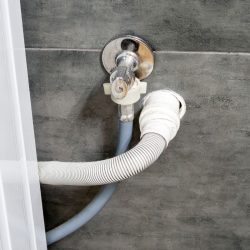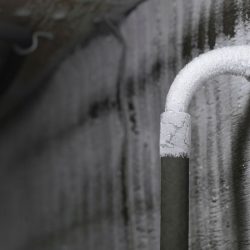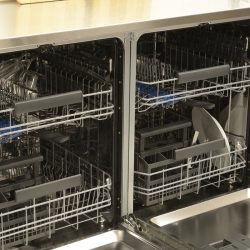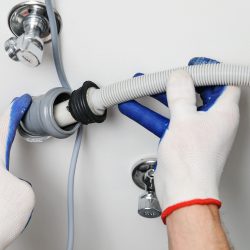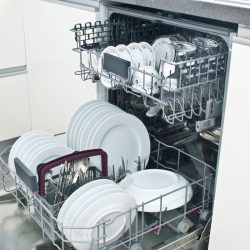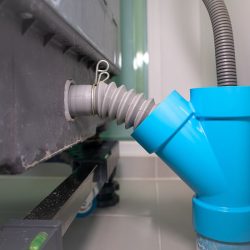Dishwashers and washing machines are household essentials needed for our daily chores. When you want the ease of cleaning and washing, these two appliances are your best options. You may wonder if the dishwasher and washing machine drain hoses are the same. We have done the research and found an answer to this question.
Dishwashers and washing machines can use the same drain hose. They are designed with the same connectors as well, so you can easily use them together. However, you should do a compatibility check because one hose might not fit the other.
When you have problems with your units, you should seek professional help. Continue reading, as we discuss dishwasher and washing machine hoses and related topics.
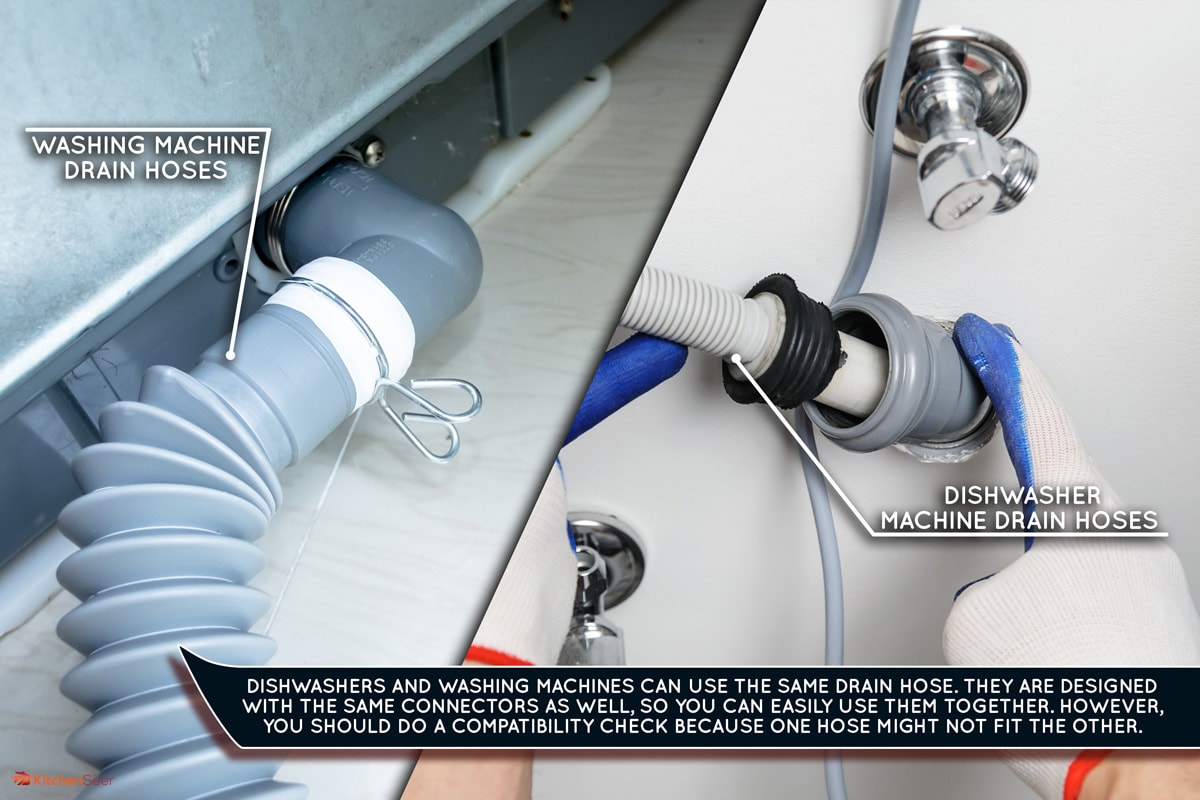
Dishwashers and Washing Machines Can Use the Same Hose

Dishwashers and washing machines can use the same hose. They have the same connector hose so you can easily use them at the same time.
However, the issue here is the compatibility of the hoses. The fittings and sizes of both appliances should match each other so you can use them interchangeably. You can consult your plumber regarding this matter.
Types of Hose
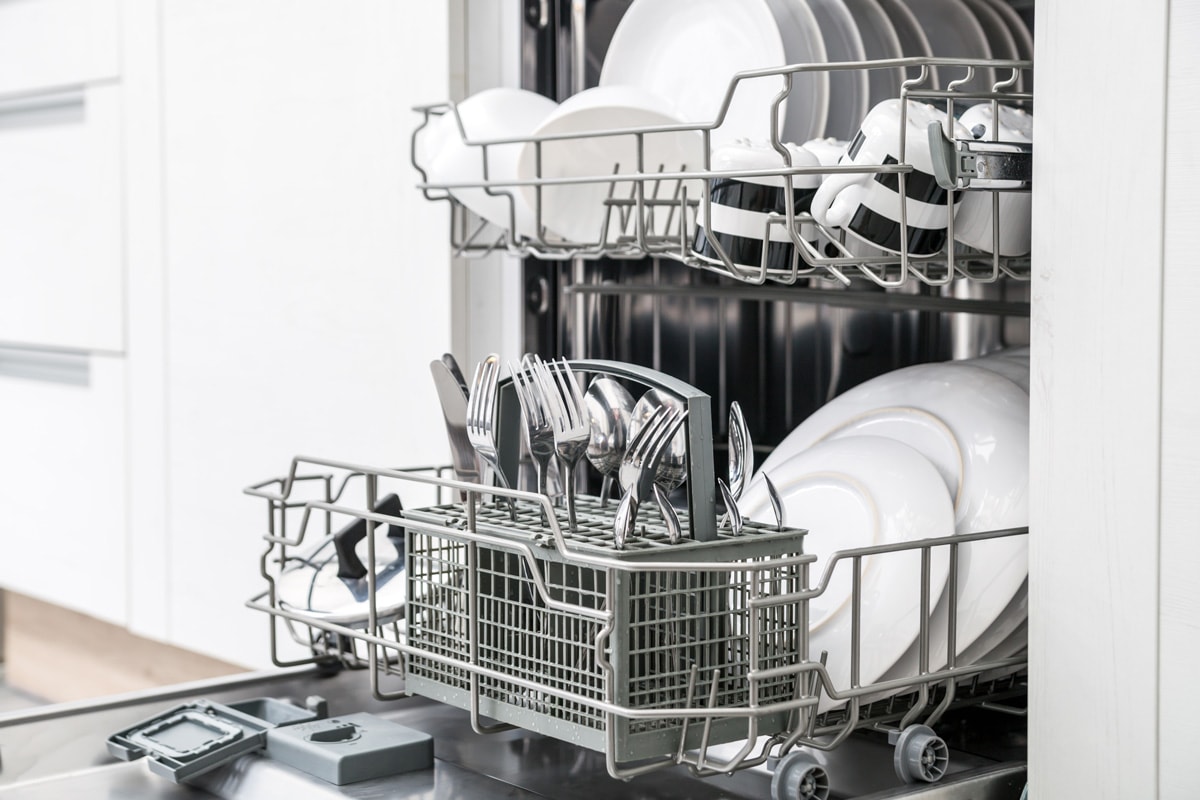
Dishwashers and washing machines use three types of hose.
Reinforced rubber hose
Reinforced rubber is used for most dishwasher and washing machine hoses. This type of hose is comparatively cheap compared to other types. You can easily find these hoses online or in a local home improvement store.
Reinforced rubber is extremely durable. It can withstand pressurized water because of its rayon construction. It has a polyester web that strengthens the rubber.
On the downside, reinforced rubber hose is not the best for washing machines, as the hose can burst.
Only consider reinforced rubber when your unit is in the garage. For indoor use, non-reinforced rubber is best.
Stainless steel braided hose
Steel braided hose can be a good option for appliances. Pricewise, it falls between the cheapest and most expensive options. However, it is worth the money.
Stainless steel braided hose encloses a rubber hose that is not likely to burst and has a lower chance of failure.
Check out this product on Amazon.
You should avoid using this type of hose in a tight space because it may bend or kink. Bending might cause the hose to burst. To prevent this from happening, look for a hose with an elbow tip.
Stainless steel braided hose meets the minimum criteria compared to a basic rubber hose.
Automatic shut-off hose
An automatic shut-off hose has shut-off technology that adds safety for many homeowners. If the hose senses any sudden burst, it will alter the water pressure and help facilitate the stoppage of water flow.
Check out this product on Amazon.
An auto shut-off hose is helpful in a household because leaks can occur in many areas of the house that are left unnoticed.
Factors to Consider Before Installing a Washing Machine or Dishwasher
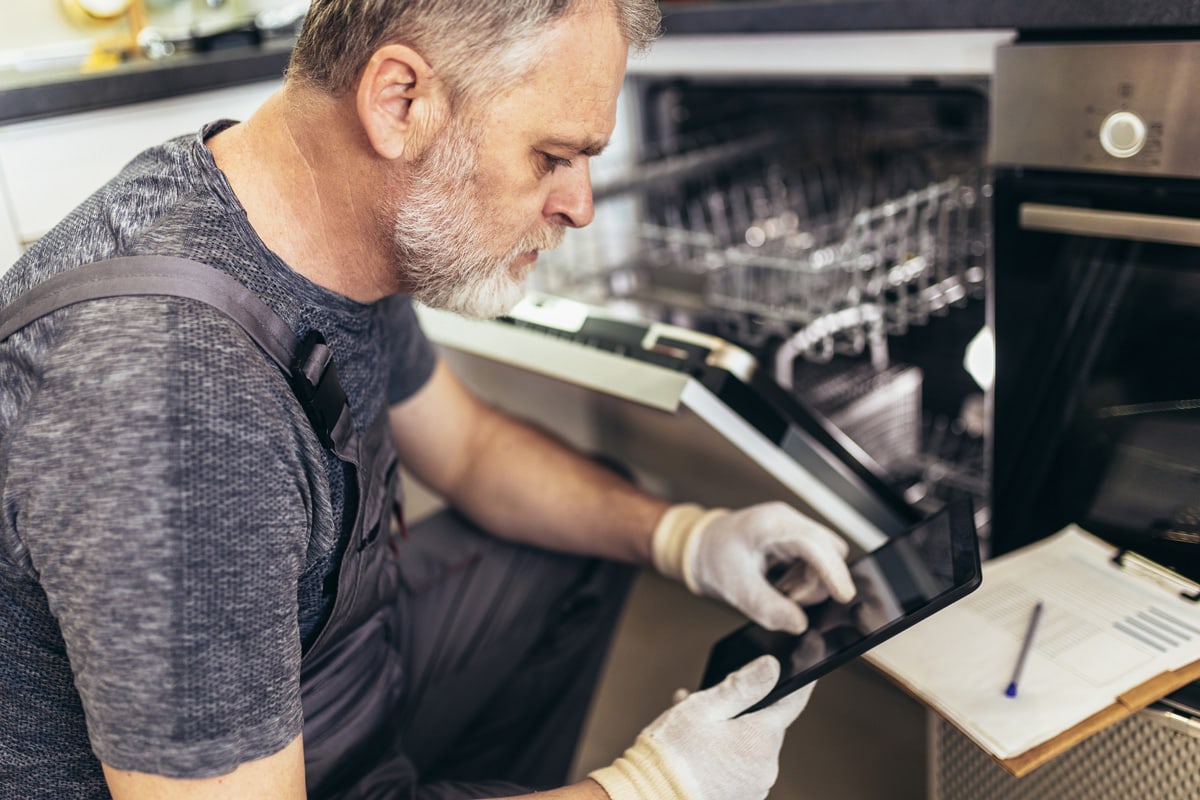
You probably have designated spaces for your washing machine and dishwasher. Depending on where you want to set them up, there are things that you need to consider before you start the plumbing process.
Power supply
Dishwashers and washing machines need to have a standard socket. However, some sockets are placed above the working area.
The main shut-off valve should be easily accessible in case of emergencies. Avoid placing it in a hard-to-reach area.
This will allow you to immediately shut off the plumbing system if it needs maintenance or in the case of a burst hose or broken pipe. You can prevent water damage and save money on repairs and replacement of materials.
Water supply
Washing machines have hot and cold water connections. Some have only cold water supply connections. Dishwashers only need a cold water supply.
If the units are fed from the kitchen tap, the water is in mains pressure. If it needs hot water, there will be a gravity pressure from upstairs or the mains pressure.
If you are planning to install a washing machine in the bathroom, place the fused connection separating the bathroom, and connect the unit to an outlet plate.
Waste hose connection
The washing machine and dishwasher have flexible hose to discharge waste from the pipe.
Consider this option. Using a P-trap, hook the hose at the top of the open standpipe. This will be your base. The waste pipe should run on the outside wall or directly to the soil stack.
The air gap from the standpipe stops the polluted water from tapping on the machine. The easiest remedy for this is to place the unit next to the sink and use a washing machine trap. Install the non-return valve to prevent the backflow of wastewater.
The dishwasher drain hose should be separated to reduce obstruction. It should be placed in a high loop to prevent the backflow of water.
Piped connections
If the hose does not reach the existing pipes, turn off the main water supply, drain, and cut the pipes. Run pipe branches to the machine and add T-fittings. It should end with the stop valves. If the pipe is close to the unit, fit a T-piece valve and screw the hose.
Turn on the switch and check for leaks.
If you still find it difficult to plumb in, call your plumber for advice.
How to Fix a Washing Machine That Doesn't Drain
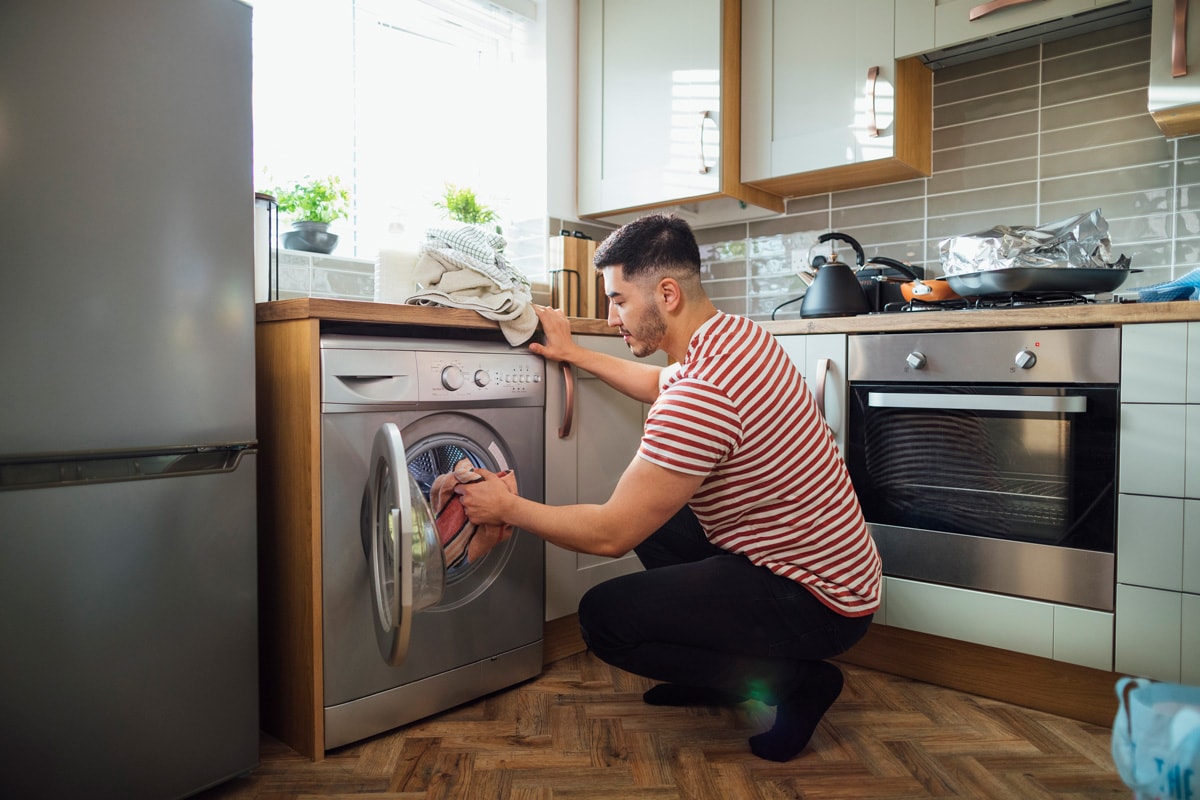
An effective washing machine removes dirt, mud, and stains from your clothes. The right way to clean your clothes depends on the washing machine setting you choose.
There are three basic cycles for a washing machine: the first is when the water fills the machine after you push the “start” or “on” button.
The second is the wash cycle, when the drum drains and refills. The third is when the machine is filled with water next to the last rinsing of clothes and spins.
You may have opened the lid to your washer when it stopped only to find the clothes are still soaked with water. There is something wrong—the machine isn't draining.
You can try to solve the problem by following the tips below.
Do a master reset
Unplug the washing machine for about a minute, then plug it back in. Open and close the lid to reset the machine. This won’t work for some washing machine brands, but you can check your owner's manual for the right way to reset the machine.
Check the lid
A top-load washing machine drains and spins once the lid is firmly closed. A defective washer lid might be the reason why your washer does not drain.
Check if the machine will respond when you press the lid slowly. If it triggers the washer to drain, then try to extend the lid to reduce the switch. If nothing happens, then it is time to replace it.
Check for a bent or twisted hose
You may need to adjust the washing machine's hose in order for the water to drain smoothly. If the hose is bent, the water can't flow directly to the drain. It could cause the water to leak into some parts of the machine.
Check the pump for clogging
Clogging is one of the most common problems of washing machines. Small particles or fibers can cause the pump to clog.
Check for obstructions in certain areas such as the front panel. If you find anything that obstructs the flow of water, clean the area.
Final words
All in all, if you want to avoid hassles and delays, dishwashers and washing machines are your best choices around the house. In this post, we discussed the types of hoses used with each machine and how to troubleshoot certain issues with drainage.
If you enjoyed reading this article, you may want to read these related posts:
Should I Be Able To Blow Through A Dishwasher Drain Hose?
Do Washers Come With Drain Hose?
Do Kitchen Faucets Come With Hoses?



